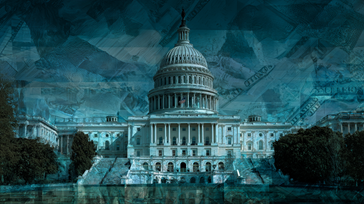The Debt Ceiling: Why Every Trader Should Care

The Debt Ceiling: Why Every Trader Should Care
Here’s the deal: the U.S. government has a spending problem—and it’s not new. Since the '60s, the Treasury’s been running a tab that tax revenue can’t cover. So, to keep the lights on, they borrow money by selling Treasury securities: Bills, Notes, and Bonds. But Congress, in its infinite wisdom, decided to cap how much the Treasury can borrow. That’s what we call the “debt ceiling”—and every time we get close to it, markets hold their breath.
As of June 18, 2025, the U.S. national debt is sitting at $36.2 trillion. The ceiling? $36.1 trillion. Yep—already blown through it. And now we’re back in the same political game of chicken that’s spooked investors time and time again.
What Exactly Is the Debt Ceiling?
The debt ceiling is a legal cap on how much debt the federal government can rack up. It doesn’t control how much Congress spends—that ship’s already sailed when budgets are approved. It just limits how much the Treasury can borrow to pay the bills already due.
We’ve had this ceiling since 1917 (World War I, if you’re keeping score), and every time we approach it, the Treasury starts scrambling. They use what’s called “extraordinary measures”—basically accounting tricks—to buy time. But once those tricks run out, and Congress hasn’t raised or suspended the ceiling, the U.S. risks defaulting on its obligations. That’s a problem.
What Happens When We Hit the Ceiling?
It’s not like the Treasury stops paying bills immediately. They juggle funds, delay investments in federal retirement systems, and move money around. But this only works for a while. Eventually, we reach what’s called the “X-date,” when the government runs out of money and options. That’s when defaults, credit downgrades, and market chaos become real risks.
And this isn’t theoretical. Back in 2011, the debt ceiling showdown tanked the Dow by nearly 2,000 points in two weeks. S&P downgraded the U.S. credit rating for the first time in history. Traders who weren’t paying attention got burned.
2025: Déjà Vu with a Twist
Now here we are again. According to the CBO and Treasury Secretary Scott Bessent, we could hit the X-date by August or September 2025. And just to keep things spicy, President Trump’s back in office with his “One Big Beautiful Bill Act” (OBBBA)—a $4 trillion package of tax cuts, spending hikes, and a temporary debt ceiling extension until 2027.
The bill passed the House by a razor-thin margin, but it’s already drawing fire from fiscal hawks and big names like Rand Paul and Elon Musk. The CBO says it could add up to $3.3 trillion in new deficits by 2034. The Senate’s supposed to vote by July 4, but let’s just say gridlock is alive and well.
Oh, and Trump’s also talking about scrapping the debt ceiling altogether. Some Democrats agree, but for traders and investors? That’s just more uncertainty with a bigger upside risk—if you know how to play it.
Why Should Traders Care?
Because markets hate uncertainty—and this issue brings it in spades. Even the threat of default sends Treasury yields higher and credit default swaps wider. While we are well off of the January highs of 4.80%, the recent trend from April 2025 lows is very strong! The yield on the 10-year bond has risen 14% from April to June of 2025, signaling tougher times ahead. And that’s not a coincidence.
If this turns into another 2011-style standoff, expect volatility in equities, Forex, interest rate derivatives—you name it. And if we do default, even temporarily, institutional investors holding Treasuries—think pension funds and insurance companies—will be forced to dump them. That could tank bond prices, spike rates, and trigger a flight to safety that scrambles global markets.
The Bottom Line
Whether you trade stocks, bonds, futures, or forex, the debt ceiling is more than political drama—it’s a real risk factor that can move markets. And this year, with Trump’s aggressive spending agenda, partisan gridlock, and a tight window before the Treasury runs out of tricks, the stakes are high.
That’s why now—more than ever—you need to understand what’s moving the bond market and how to use that knowledge to position your trades. Because when the storm hits, it’s not going to be about who’s the loudest voice on Twitter—it’s about who had the best plan.
Want to make sure you’re not trading blind? Join Bill Addiss, a 40-year bond market veteran, in his upcoming class, “Canary in the Coal Mine.” He’ll show you how to read the bond market like a pro, anticipate macro shifts before they hit your screen, and use bond signals to better time your trades.
Don’t just watch the headlines. Understand what’s really going on—and trade like it.